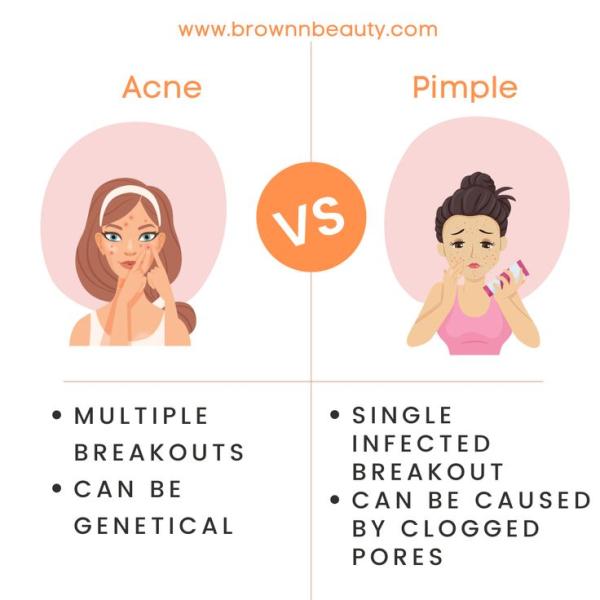| Acne and pimples are common terms for the same inflammatory skin condition affecting hair follicles. Understanding the underlying causes and available treatments can help manage and improve skin health. What Causes Acne?Acne arises from a combination of factors that disrupt the normal functioning of the skin. These factors include: - Excess Sebum Production: Sebum, an oily substance produced by sebaceous glands near hair follicles, is essential for skin lubrication. Overproduction of sebum, however, can clog pores.
- Dead Skin Cells: The natural shedding of dead skin cells is a continuous process. When these cells aren't properly shed, they can accumulate within pores, contributing to blockage.
- Bacteria: Cutibacterium acnes (formerly Propionibacterium acnes) is a bacteria naturally present on the skin. In the presence of clogged pores, this bacteria thrives, contributing to inflammation and worsening acne.
- Hormones: Hormonal fluctuations, particularly during puberty, pregnancy, and menstruation, can significantly increase sebum production, leading to acne breakouts.
- Genetics: A family history of acne increases an individual's predisposition to developing the condition.
- Other Factors: Certain medications, stress, and dietary choices can also influence the development and severity of acne.

Types of AcneAcne manifests in various forms, broadly categorized as non-inflammatory and inflammatory: - Comedones (Non-inflammatory): These are clogged pores without associated inflammation.
- Blackheads (Open Comedones): Clogged pores that are open to the air. They appear dark due to oxidation of the contents, not dirt.
- Whiteheads (Closed Comedones): Clogged pores that are closed, appearing as small, flesh-colored bumps.
- Inflammatory Acne: These lesions involve inflammation and can be more severe.
- Papules: Small, red, tender bumps.
- Pustules: Papules with pus-filled centers (the classic "pimple").
- Nodules: Larger, deeper, painful lumps under the skin.
- Cysts: Large, painful, pus-filled lumps that can potentially lead to scarring.
TreatmentTreatment options for acne are tailored to the severity and type of acne present. - Over-the-Counter Treatments: Products containing benzoyl peroxide, salicylic acid, and retinoids (like retinol) can help unclog pores, kill bacteria, and reduce inflammation.
- Prescription Medications: For more severe acne, a dermatologist may prescribe topical or oral antibiotics, retinoids, or anti-androgens.
- Other Treatments: In specific cases, chemical peels, microdermabrasion, laser treatments, and light therapy might be recommended.
Important ConsiderationsSqueezing or picking at pimples can exacerbate inflammation, increase the risk of scarring, and spread bacteria. It is vital to consult with a dermatologist or other healthcare professional for a proper diagnosis and treatment plan, especially if you have severe or persistent acne. They can determine the most appropriate course of action based on your individual needs and skin type.
Tags: Acne Causes Acne Treatment Acne Types Acnes Pimples Skin Health Understanding Acne  
|
 1,349
1,349  0
0  0
0  3224
3224 